ANNUALS > ZINNIA

Elizabeth is a Permaculture Garden Designer, Sustainability Consultant and Professional Writer, working as an advocate for positive change. She graduated from the University of St. Andrews with an MA in English and Philosophy and obtained a Diploma in Applied Permaculture Design from the Permaculture Association.
Reviewed By COLIN SKELLY

Colin is a Horticulturist and Horticultural Consultant with experience in a range of practical and managerial roles across heritage, commercial and public horticulture. He holds the Royal Horticultural Society’s Master of Horticulture award and has a particular interest in horticultural ecology and naturalistic planting for habitat and climate resilience.
ZINNIA GUIDES
Zinnias are popular annual flowers that really come into their own in the late summer months.
Many different zinnias have been bred and make great bedding or container plants.
As long as they have plenty of sunshine and well-draining conditions, these delightful plants can thrive in British gardens.
Overview
| Botanical Name | Zinnia |
| Plant Type | Annual |
| Native Area | North and South America |
| Hardiness Rating | H2 |
| Foliage | Deciduous |
| Flowers | Solitary flower heads in multiple hues |
| When To Sow | March to June |
| Flowering Months | July to October |
| When To Prune | August to October |
Sunlight
Preferred
Full Sun
Exposure
Sheltered
Size
Height
0.1 – 0.5M
Spread
0.1 – 0.5M
Bloom Time
Summer
Soil
Preferred
Most soil types
Moisture
Moist but well-drained
pH
Any
Data collected by Kew Botanic Gardens suggests Zinnias originate from shrubby habitats in North and South America.1Zinnia. (n.d.). Kew Royal Botanic Gardens. Retrieved March 27, 2023, from https://powo.science.kew.org/taxon/urn:lsid:ipni.org:names:332074-2
There are a number of different species within this genus (Kew themselves lists 23 accepted varieties) from which hundreds of cultivars have been produced since breeding programs began in the 19th century.2Hazzard, W. (2022, October 1). Zinnia. Plant Breeding Center. Retrieved March 27, 2023, from https://plantbreeding.ucdavis.edu/zinnia

Today, we can find zinnias in a wide range of colours and with both single and double blooms.
There are dwarf types and much taller options on offer.
Zinnia Varieties
There are so many different zinnias available to grow that we could not possibly name more than a small fraction.
However, here are some of the common varieties to consider that are among those that have received an RHS Award of Garden Merit:
Z. ‘Profusion White’
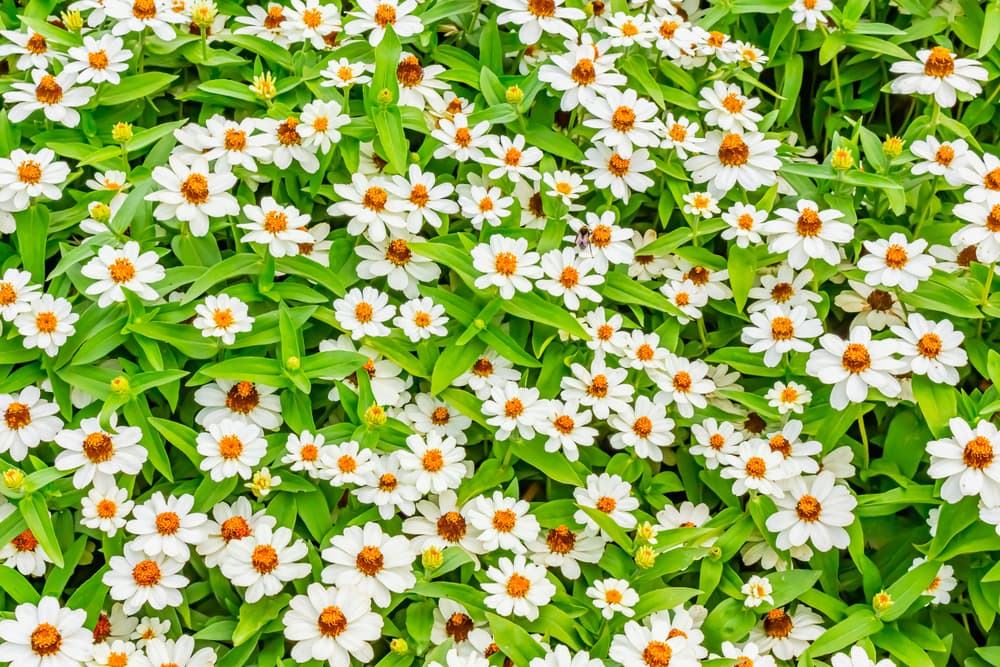
Z. ‘Profusion Orange’
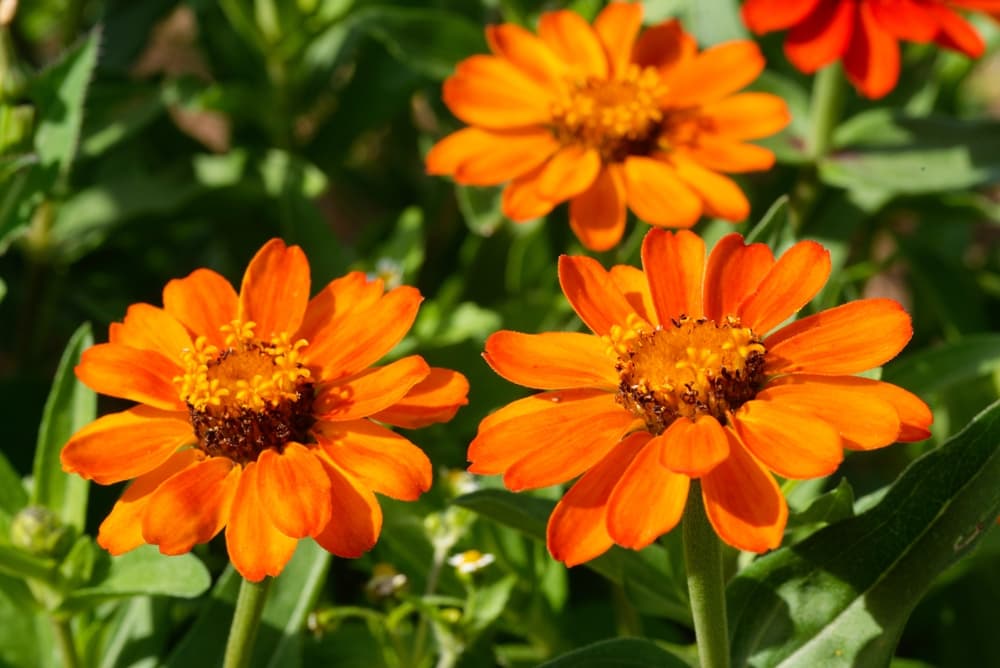
Z. elegans ‘Benary’s Giant’

Z. elegans ‘Purple Prince’
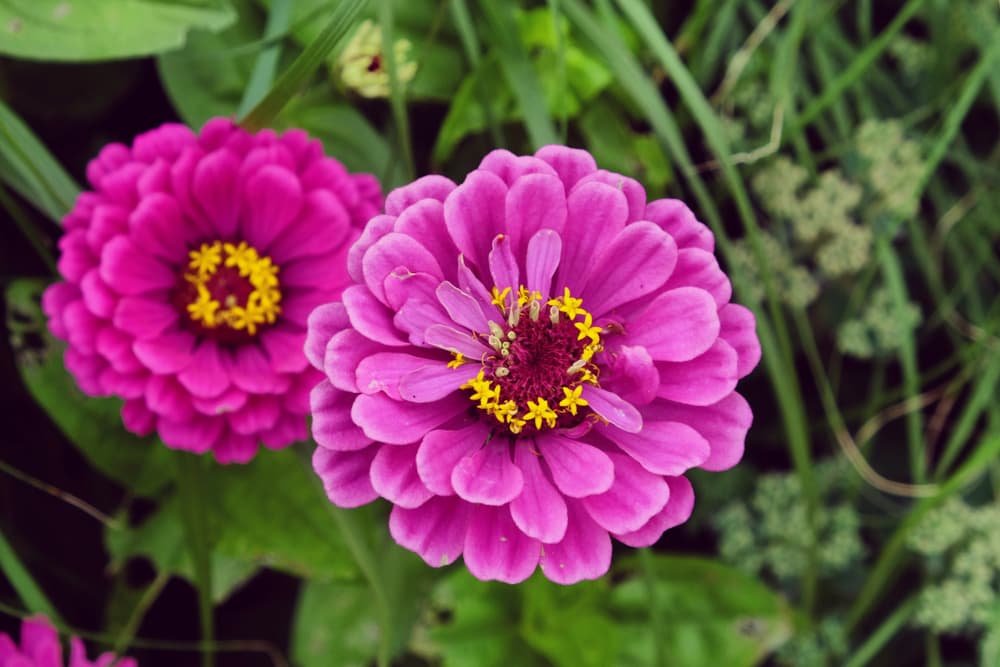
Z. elegans ‘Dreamland’

Z. ‘Zany Rose Picotee’

Z. elegans ‘Zowie! Yellow Flame’

When choosing a zinnia, you should think about the colour and form of the flowers, as well as their size and height, which will have a bearing on where they are best placed in your garden.
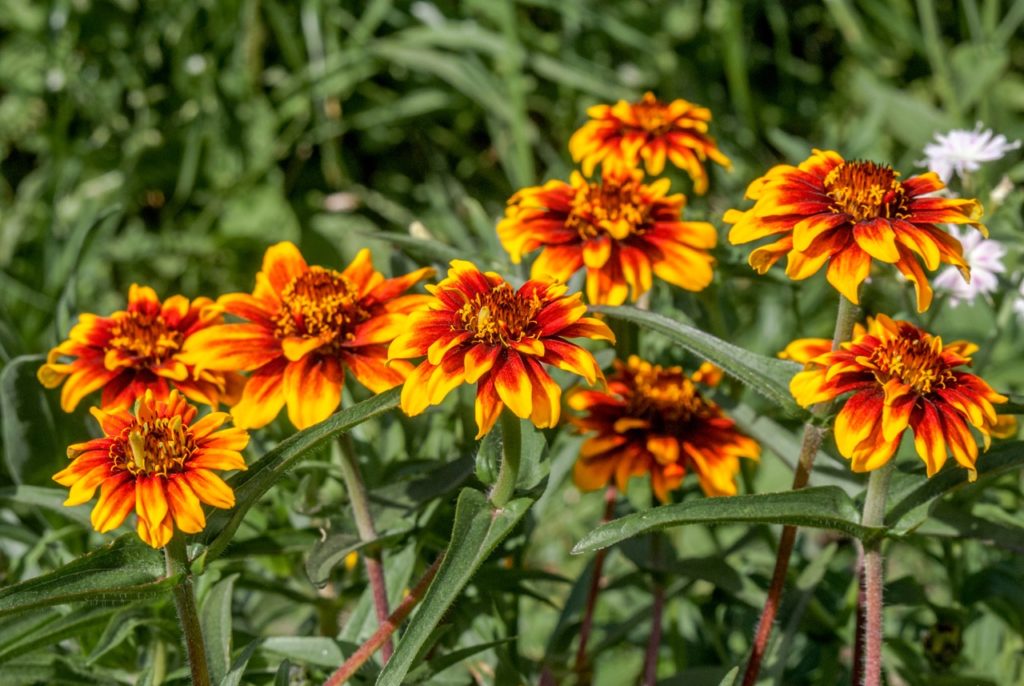
It is also worth noting that some zinnias are more frost or disease-resistant than others, so these can be good choices when the ideal conditions for growing these flowers may be more of a challenge to provide.
How To Grow Zinnias
The most important thing to remember when growing zinnias is that these are plants that hail from warm and sunny places with well-drained conditions.
Of course, not all parts of the British Isles can provide those conditions and some years are better than others when it comes to growing these flowers here.
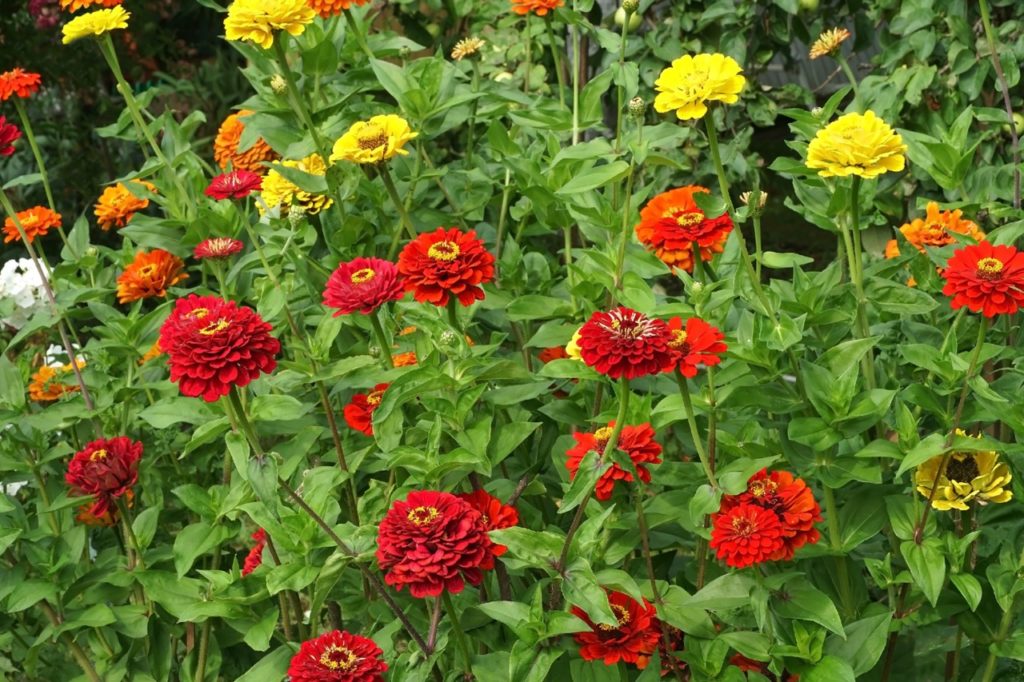
With a lovely warm summer, zinnias can thrive.
Zinnias are most commonly grown from seed, but can also be purchased to plant out in your garden.
Seeds are usually sown from late April or early May, though in some areas, sowing outside in June may be possible.
Planting Out
Zinnias, whether grown from seed at home or purchased, should be planted out in a garden only once all danger of risk has passed where you live.
In the UK, it is typically safest to wait until late May or early June before you plant them out.
How far apart you decide to space your zinnias will depend on your growing schemes and on the size of the variety that you have chosen.
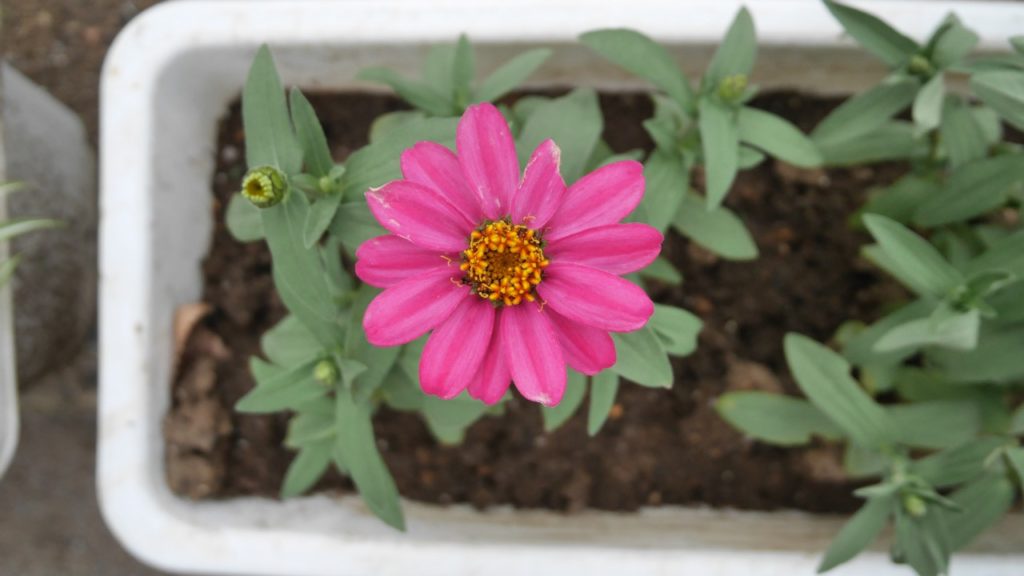
To cover the growing area or in a block for bedding, plants are typically spaced around 30-40cm apart.
If you are thinking about growing zinnias, then you should also think about how these flowers might be beneficial to your vegetable garden crops.
Most zinnias do not produce edible yields, but many varieties will draw in pollinators and other beneficial creatures to aid with growing food successfully.
Think about growing zinnias alongside crops that like similar growing conditions.
Zinnia Care
Preferred Soil
Zinnias are not hugely fussy about the type of soil that they are grown in or the pH level.
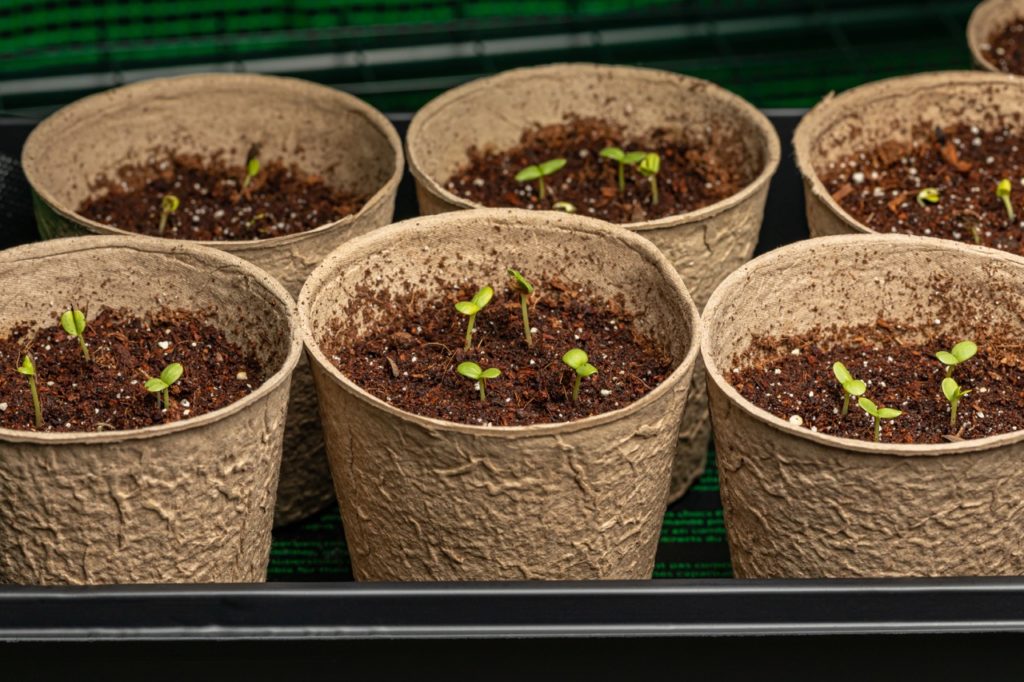
However, they do need free-draining and warm conditions, so it will be much more challenging to grow these plants in soils that are slow to warm and do not drain as well.
If you have heavy clay soils, you may have more luck growing zinnias in containers.
“I garden on clay and I find that Zinnias struggle to thrive with their roots in it, particularly with prolonged summer wet in the UK,” says Colin Skelly, a Master Horticulturist.
“I prefer to grow them in pots in John Innes No.3 with some added grit. This sharp drainage makes a big difference to the health and growth of the plants.”
Position & Sunlight
Zinnias will thrive in a south or west-facing aspect in full sun.

They need to be provided with as much sun and warmth as possible, so you must choose a suitable location to succeed in growing them successfully.
Of course, some summers are better than others for zinnias here in the UK and even in optimal locations, growing these flowers can sometimes still be a little bit hit-and-miss.
Watering & Feeding
Though zinnias require well-drained and free-draining conditions, they also do require consistent watering throughout the summer months and do not tolerate drying out entirely.
Keep zinnias watered in hot weather.
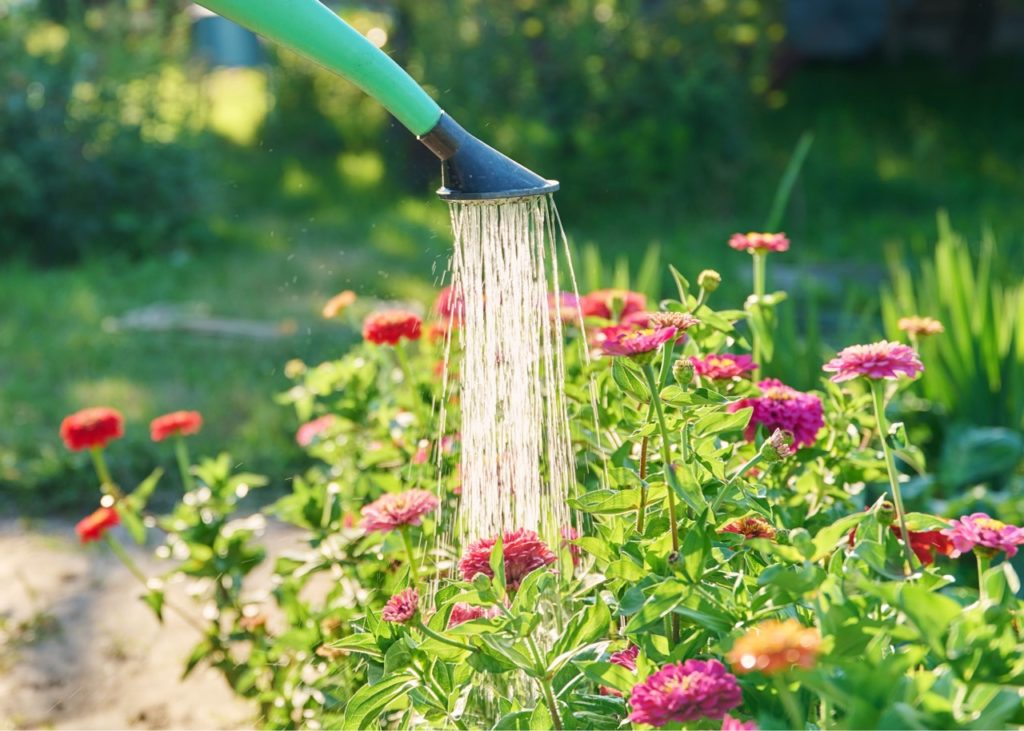
When watering, try to keep water off the foliage as much as you can, as damp leaves can cause fungal issues.
Zinnias will flower best if you provide them with a high-potassium organic liquid plant feed.
Feed them every couple of weeks through the summer.
Pinching Out
When your zinnias are around 20-30cm tall, it is a good idea to pinch out the central growing tip.
Nip it off just above a pair of leaves.
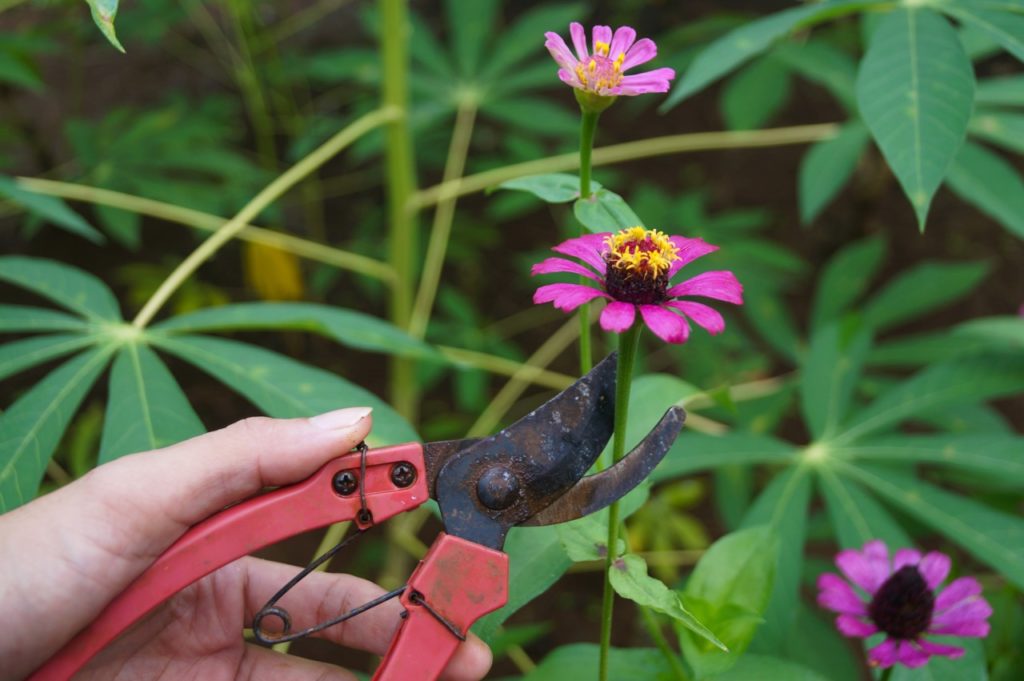
This encourages bushy growth and branching that can lead to more flowers.
You might sacrifice the first flower to do so but you will typically get more flowers over the course of the season.
Staking
If you are growing a taller zinnia variety, you may be able to grow them close together to provide some stability.
However, if doing this, you may also have to consider staking or some other form of support.
Common Problems
Zinnias can, unfortunately, be prone to a number of fungal problems, from damping off as seedlings, through to grey moulds and Alternaria blight on more mature specimens.

These problems are far more likely to occur in cold and wet conditions.
FAQs
How Tall Do Zinnias Grow?
Some zinnia varieties will grow only to around 30cm in height, while others will grow much taller, with some even reaching up to 1m in height.
Do They Self-Seed?
Zinnias in the UK do not usually produce seed and most varieties grown are F1 hybrids and will not come true from seed in any case.

So, if you want to grow zinnias, you’ll need to purchase seeds or plants each year.
Will Zinnia Plants Come Back Every Year?
No – zinnias grown in UK gardens are treated as annuals and they will not be able to make it through the winter in your garden.
If you want zinnia again next year, you will need to sow or buy some more.
References
- 1Zinnia. (n.d.). Kew Royal Botanic Gardens. Retrieved March 27, 2023, from https://powo.science.kew.org/taxon/urn:lsid:ipni.org:names:332074-2
- 2Hazzard, W. (2022, October 1). Zinnia. Plant Breeding Center. Retrieved March 27, 2023, from https://plantbreeding.ucdavis.edu/zinnia

